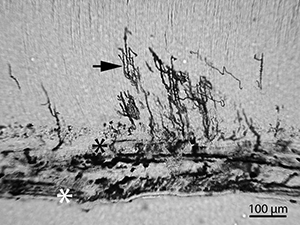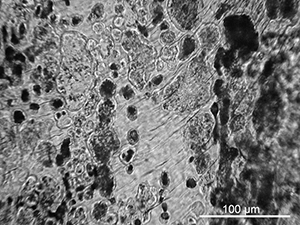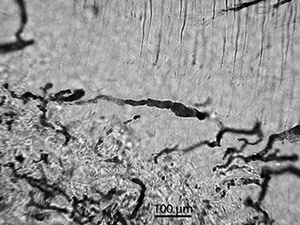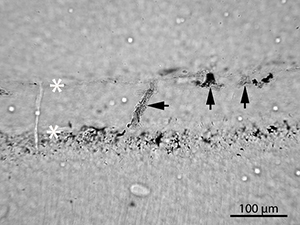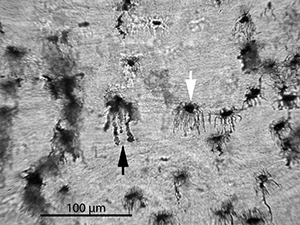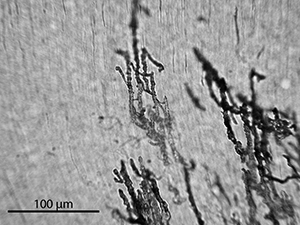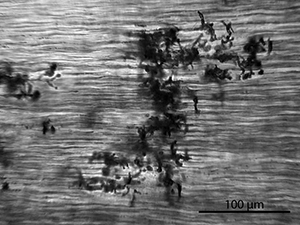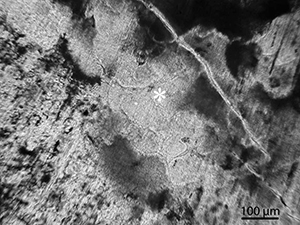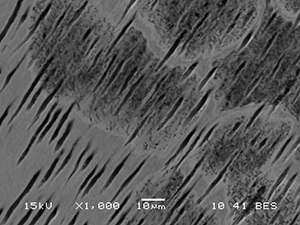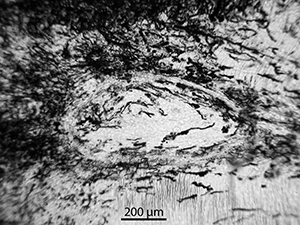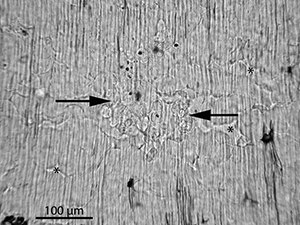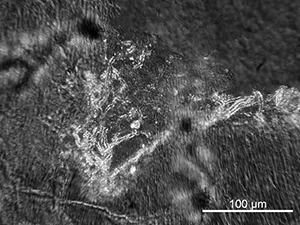
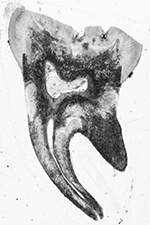
In the transversal thin sections of the Eindhoven bone samples, microbial tunnelling was observed as Hackett's budded and linear longitudinal tunnels. The tunnels in the dentine and cementum appear largely similar, with a similar morphology and size to those in bone. Several of the teeth displayed possible analogues to the Wedl type 2 tunnels found in bone (Trueman and Martill 2002) in the form of enlarged canaliculi within the cementum. Within the dentine, destruction also appeared in the form of enlarged dentinal tubuli.


